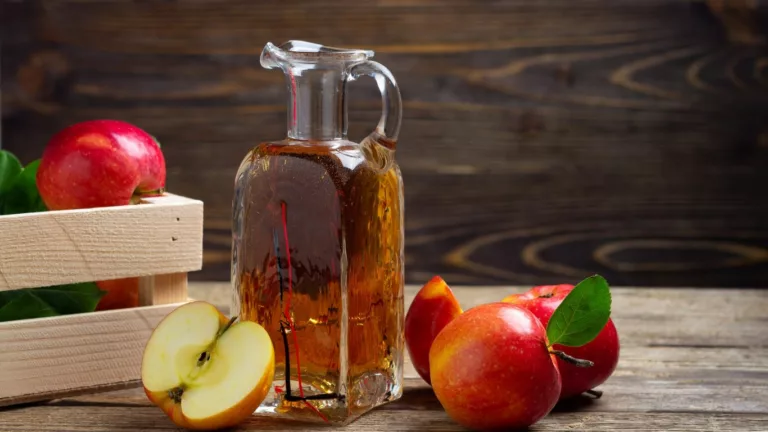Best GERD Friendly Gluten Free Recipes That Actually Taste Amazing
If you’ve ever dealt with the uncomfortable burn of acid reflux or that nagging fullness after a few bites of food, you’re not alone. As someone who works closely with patients in a gastroenterology clinic, I’ve seen firsthand how dietary changes can be life-changing—literally. One of the most frequent questions I get is, “What can I eat that won’t trigger my GERD?” That’s what inspired me to put together some GERD friendly gluten free recipes that not only taste great but also make your gut feel grateful. And trust me, I’ve had my fair share of food experiments while helping patients manage their reflux—some were winners, others… not so much.
Why Going Gluten-Free Matters for GERD

Now, I know gluten has been demonized in a lot of diets lately, but when it comes to GERD, there’s actually some logic behind cutting it out. For patients with gluten sensitivity—or even just mild gluten intolerance—gluten can aggravate inflammation in the gut, which makes reflux symptoms worse. I’ve seen many of our patients feel a huge difference after swapping out the breadbasket for brown rice or quinoa.
What’s interesting is that GERD and gluten sensitivity often fly under the radar together. A lot of people don’t even realize their bloating, gas, or reflux could be linked to what’s in their sandwich. So while not everyone with GERD *has* to go gluten-free, a lot of my patients have found it super helpful. Personally, I’ve made these swaps in my own home cooking too—and I have to say, I don’t miss regular pasta as much as I thought I would (thanks, rice noodles!).
GERD Friendly Gluten Free Recipes: What to Know Before You Cook

Start with Safe Ingredients
When it comes to GERD friendly gluten free recipes, the ingredients you *don’t* use matter just as much as the ones you do. Here are some things I always keep in mind—both in clinic when advising patients, and in my own kitchen:
- Skip the garlic and onions (I know… heartbreaking. But trust me, your esophagus will thank you.)
- Use lean proteins like turkey, chicken breast, or firm tofu.
- Choose gluten-free grains such as quinoa, brown rice, or millet.
- Focus on low-acid veggies like spinach, zucchini, sweet potatoes, and carrots.
- Avoid citrus and tomato-based sauces—go for herb-infused olive oil or homemade low-acid dressings instead.
Portion Size Matters More Than You Think
This one surprises a lot of people, but even the healthiest GERD-friendly dish can trigger reflux if you overeat. A smaller portion gives your stomach space to digest without sending food back up where it doesn’t belong. I always recommend patients eat slowly, chew thoroughly, and maybe take a short walk after meals if possible. A little movement can go a long way in calming the digestive system.
Time Your Meals Right
Another big one: Don’t eat too close to bedtime. I know it’s tempting to have a snack after a long day, but lying down soon after eating is basically an open invitation for reflux. I advise patients to eat their last meal at least 2-3 hours before heading to bed. Bonus tip: Elevate the head of your bed if nighttime reflux is a problem. It really helps.
My Go-To Pantry Staples for GERD-Safe Cooking

Here’s a quick peek into my own pantry—these staples make whipping up GERD-safe, gluten-free meals so much easier:
- Brown rice and quinoa: Total lifesavers for quick meals.
- Unsweetened almond milk: A gentle, reflux-safe base for smoothies or creamy sauces.
- Ginger and turmeric: Natural anti-inflammatories that add a flavor kick without triggering symptoms.
- Herbal teas: Chamomile and slippery elm are especially soothing.
- Lean frozen proteins: Chicken breast, turkey patties, or fish fillets for easy weeknight dinners.
With these basics in your kitchen, you can improvise meals without having to constantly Google “Is this food okay for GERD?” (Been there. Way too many times.)
Easy GERD Friendly Gluten Free Recipes to Try at Home

Alright, now that we’ve covered the basics, let’s get to the fun part: the food! These GERD friendly gluten free recipes are some of my go-tos. They’re gentle on the stomach, don’t sacrifice flavor, and most importantly, they’re doable on a busy schedule. I’ve tested them all—some during quick lunch breaks at the clinic, others on lazy Sunday afternoons. I’ve also shared these with a few of my GERD patients, and they’ve had great feedback.
1. Soothing Ginger Chicken & Quinoa Bowl
This one is a lifesaver. It’s warm, nourishing, and super easy to meal prep. The ginger gives it just enough zing without irritating your stomach, and quinoa keeps it gluten-free and filling.
- Ingredients: Boneless chicken breast, cooked quinoa, shredded carrots, zucchini ribbons, grated ginger, and a splash of coconut aminos (a soy sauce alternative).
- Directions: Sauté ginger in a little olive oil, add thinly sliced chicken, cook through, then toss with pre-cooked quinoa and veggies. Heat everything gently until warm, and serve with a sprinkle of chopped parsley.
I always keep pre-grated ginger in the freezer—it saves time and still gives that warm, comforting flavor.
2. Creamy Zucchini Soup (No Dairy, No Bloat)
This soup is my go-to for dinner when I want something light but satisfying. Plus, it reheats like a dream.
- Ingredients: Zucchini, peeled potato (small), leek (white parts only), olive oil, low-sodium veggie broth, and a splash of unsweetened almond milk.
- Directions: Sauté leeks in olive oil until soft, add chopped zucchini and potatoes, pour in broth, simmer until tender. Blend until smooth, stir in almond milk, and season with a pinch of salt.
The best part? You can freeze this in batches. Perfect for when reflux hits and cooking is the last thing you want to do.
Smart Cooking Tips for Sensitive Digestion

Low and Slow is the Way to Go
High heat can break down the natural sweetness in veggies and cause charring, which may aggravate GERD symptoms. When I’m prepping meals for patients with reflux, I always recommend roasting or steaming over frying or grilling. Plus, it’s less mess and more flavor.
Try roasting sweet potatoes at 375°F until they’re fork-tender. They pair perfectly with a piece of baked fish or some lemon-herb chicken (just skip the citrus if you’re extra sensitive!).
Be Mindful with Oils and Fats
I’ve seen a lot of people make the mistake of assuming all oils are safe. While olive oil is generally a safe bet, too much fat in one sitting can trigger reflux. That includes healthy fats too. I usually stick to about one tablespoon of olive oil per serving when cooking, and I always avoid butter or cream in GERD-friendly meals.
Use Herbs to Add Flavor (Not Fire)
We all know spicy food is a no-go for GERD, but that doesn’t mean your food has to be bland. I’m obsessed with using fresh herbs like basil, parsley, dill, and thyme. They brighten dishes up and add flavor without setting your throat on fire. Bonus: a lot of these herbs have anti-inflammatory benefits too.
Snack Ideas That Won’t Trigger Reflux

Finding snacks that are safe, easy, and actually satisfying can be tricky. I’ve played around with a lot of combinations, and these are my tried-and-true favorites:
- Banana slices with almond butter – Make sure the almond butter doesn’t have added sugars or oils.
- Plain rice cakes with avocado – Sprinkle a bit of salt or chopped herbs for extra flavor.
- Homemade chia pudding with almond milk – Add a drizzle of maple syrup or mashed blueberries if you need a touch of sweetness.
- Low-fat turkey roll-ups with cucumber sticks – Perfect for when you’re craving something savory but need to keep it light.
I always keep a little snack pack in my clinic bag—usually a rice cake and a single-serve almond butter pouch. Super handy between patient charts and helps me stay on track with reflux-friendly eating, even on the go.
Hydration Without the Burn
Let’s not forget drinks. So many GERD patients tell me, “I drink water and still feel the burn.” It’s often because they’re drinking too much at once or choosing the wrong beverages. Skip sparkling water, coffee, and citrus juices. Instead:
- Sip room temperature or warm water—cold drinks can shock your system.
- Try herbal teas like chamomile or slippery elm—they’re soothing and help coat the esophagus.
- Keep hydrated throughout the day in small sips rather than chugging all at once.
One of my favorite habits is starting my morning with a warm mug of chamomile. It sets the tone for a calm belly and a calm day.
Planning a GERD Friendly Gluten Free Weekly Menu

Let’s be honest—meal planning can feel overwhelming, especially when you’re juggling food triggers, gluten avoidance, and trying to actually enjoy your meals. But once you get into a rhythm, it makes life *so* much easier. I’ve helped countless patients build out GERD-friendly, gluten-free meal plans, and once they have a template, the stress starts to fade.
Here’s a sample weekly plan I often share with patients (and I’ve used versions of it myself too):
- Monday: Grilled turkey patties with mashed sweet potatoes and steamed green beans
- Tuesday: Quinoa veggie bowl with roasted carrots, zucchini, and tahini drizzle
- Wednesday: Baked salmon (no citrus) with brown rice and wilted spinach
- Thursday: Zucchini soup and rice cakes with almond butter
- Friday: Ginger chicken stir-fry with broccoli and millet
- Saturday: Gluten-free pasta with basil pesto (no garlic!) and a cucumber salad
- Sunday: Leftovers or simple egg scramble with sweet potato hash
All of these meals are low-acid, low-fat, gluten-free, and super flexible. I always tell patients: if a recipe works, double it and freeze half for later. Having safe food ready to go is a game-changer when reflux hits unexpectedly.
When Eating Out or Traveling with GERD Gets Tricky

This is a question I get a *lot*: “What do I eat when I’m not at home?” Traveling or dining out can definitely be tough when you’re managing GERD and avoiding gluten—but it’s totally doable with a bit of planning.
My Go-To Tips for Eating Out:
- Stick to grilled proteins and plain veggies—ask for no seasoning or sauces if needed.
- Skip anything fried, creamy, or tomato-based (those are reflux traps).
- Ask about gluten-free options, and don’t hesitate to explain your needs—most places are accommodating now.
- Bring backup snacks like rice cakes, low-sugar protein bars, or individual nut butters in your bag.
I’ve had days where a safe snack from my purse literally saved me from a GERD flare-up. I remember once during a medical conference, the catered lunch was all sandwiches and cookies—I was so glad I had my own turkey roll-ups and bananas stashed in my bag!
Listening to Your Body (Because Every GERD Case Is Different)
One thing I’ve learned working in gastroenterology is this: what works for one person might totally backfire for another. Some of my patients can tolerate oatmeal, while others feel bloated after just a few bites. That’s why I always encourage people to keep a symptom food diary for a couple of weeks. Jot down what you eat, how much, and how you feel after. Patterns show up fast.
Here are some questions I usually ask patients to track:
- Did you feel reflux, bloating, or nausea after this meal?
- How long after eating did symptoms start?
- Were you sitting up, lying down, or moving around?
- Was this meal higher in fat, spice, or acidity?
Once we gather that info, it’s easier to customize meals. I love helping patients come up with personalized recipe swaps that match their triggers and comfort zones. It makes eating feel less like a battle and more like an act of care.
Empowering Yourself with the Right Resources
Managing GERD while staying gluten-free isn’t always easy, but with the right knowledge and tools, it’s absolutely manageable. I always recommend that patients work closely with a registered dietitian if possible—especially one familiar with digestive health. There’s a lot of noise online, and not all advice applies to *your* body.
Here are a few trustworthy places I often refer patients to for more info and support:
- American Gastroenterological Association
- Celiac Disease Foundation
- National Institute of Diabetes and Digestive and Kidney Diseases
At the end of the day, your body is unique. What you eat should support—not sabotage—your well-being. If that means swapping pasta night for quinoa bowls or skipping pizza in favor of a hearty veggie bake, it’s worth it. As someone who’s helped hundreds of people find their rhythm with GERD, I promise: relief is possible, and it doesn’t mean giving up flavor or joy.
Disclaimer
This article is based on personal experience and professional knowledge as a medical assistant in a gastroenterology clinic. It is not a substitute for medical advice. Always consult with a licensed healthcare provider or registered dietitian before making significant changes to your diet, especially if you have chronic health conditions.

Camellia Wulansari is a dedicated Medical Assistant at a local clinic and a passionate health writer at Healthusias.com. With years of hands-on experience in patient care and a deep interest in preventive medicine, she bridges the gap between clinical knowledge and accessible health information. Camellia specializes in writing about digestive health, chronic conditions like GERD and hypertension, respiratory issues, and autoimmune diseases, aiming to empower readers with practical, easy-to-understand insights. When she’s not assisting patients or writing, you’ll find her enjoying quiet mornings with coffee and a medical journal in hand—or jamming to her favorite metal band, Lamb of God.






